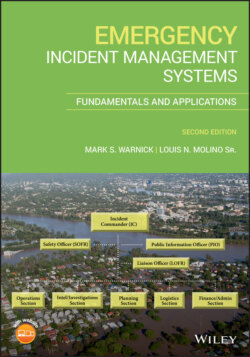Читать книгу Emergency Incident Management Systems - Mark Warnick S., Louis N. Molino Sr - Страница 88
3.24 Singapore
ОглавлениеThe country of Singapore utilizes the ICS method to manage disasters and emergencies across multiple agencies. These agencies include EMS, emergency managers, the Singapore Disaster Response Force (SDRF), the Singapore Civil Defence Force (SCDF), and more. While little historical information was found, it is known that Singapore began using the ICS method even prior to the 2005 Association of Southeast Asian Nations (ASEAN) Agreement. It appears that the Singapore Civil Defence Force has used some form of an IMS method since at least 1998. The Singapore Civil Defence Force includes many public safety agencies (including fire and HazMat), and they cooperate with the vast majority of government organizations (Yung, 2012). Beyond this, no information was found except that Singapore was a signer of the Association of Southeast Asian Nations (ASEAN) and later the Hyogo Framework.
As was mentioned earlier in this book, necessity is the mother of invention, and this is (to a certain extent) what happened in Singapore. Between February and May 2003, an epidemic gripped Singapore with fear. A patient who had been visiting China contracted Severe Acute Respiratory Syndrome (SARS). When the patient returned to Singapore, this single patient created an epidemic that would infect 238 people. Thirty‐three of those infected with the virus would end up dying (Chew, 2009). In response to the pandemic, some hospitals and physicians began looking for ways to manage future incidents such as this. Toward the end of 2003, Dr. Tham (2003) began delivering courses on the ICS method to hospitals, but this was not the Hospital Incident Command System (HICS). He had adapted the ICS method used by first responders to fit the needs of Singapore hospitals. What makes this interesting is that even though the Hospital Emergency Incident Command System (HEICS) was already developed and being used, and the US Center for Disease Control (CDC) was involved in containing this outbreak (Chew, 2009), curiously, it was not taught. There could be several different reasons why the Hospital Emergency Incident Command System (HEICS) was not used, including that it was not known in Singapore at that time and/or that it would not meet the needs of this outbreak. Even though no information could be found regarding the use of HICS in Singapore, it is a safe assumption based on other materials (Singapore training flyers, discussions about HICS, etc.) that it has been implemented.
